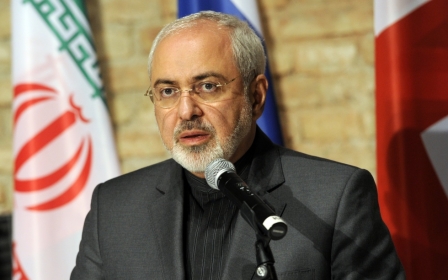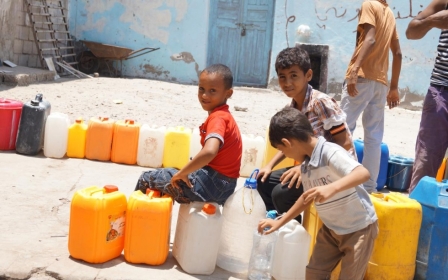Iran says warships at the entrance to key Yemen strait

Two Iranian destroyers, sent to the Gulf of Aden to protect commercial ships, have reached the entrance of Bab el-Mandeb, a strategic strait between Yemen and Djibouti, Iran's navy said on Thursday.
"We are present in the Gulf of Aden in accordance with international regulations to ensure the safety of commercial ships of our country against the threat of pirates," the head of the Iranian navy Rear Admiral Habibollah Sayari was quoted by the official IRNA news agency.
The navy sent the Alborz and Bushehr destroyers to patrol the entrance to the strait, he added.
Bab el-Mandeb, a narrow body of water separating Yemen and Djibouti, is the key strategic entry point into the Red Sea, through which around four million barrels of oil pass daily on ships headed through the Suez Canal.
Last week, US officials said a US aircraft carrier and a cruiser left the waters off Yemen and headed back to the Gulf after an Iranian naval convoy also turned back from the area.
Washington suspected the convoy of carrying weapons destined for the Houthis in Yemen.
"The information that the Iranian ships received warnings and left the area is not correct," Sayari said, insisting that Iran will not enter "the territorial waters of other countries" in reference to Yemen.
Saudi Arabia, which heads an Arab coalition conducting airstrikes on the Houthi militia since March, has imposed an air and sea blockade.
Sayari said the two destroyers would stay around Bab el-Mandeb until late June.
Iran continues to deny reports that it armed the Houthis and has called for the immediate end of airstrikes as a condition to resuming dialogue aimed at ending the crisis in the impoverished Gulf nation.
Although Iran and the Houthis have established diplomatic ties in recent months, the extent and nature of Iran's support for the militia has remained unclear and the country has never made a public statement about supplying Houthis with weapons.
The Houthis are reported to be flush with large quantities of US-supplied weapons obtained or captured from the government of Ali Abdullah Saleh before its fall in 2012. Saleh's forces fought several wars with the Houthis before the ex-president aligned with the militia against President Hadi, his successor, who is now exiled in Saudi Arabia.
American officials familiar with the Houthi takeover of Sanaa last year told The Huffington Post this month that Iranian representatives had discouraged the Houthis from taking the capital.
"It is wrong to think of the Houthis as a proxy force for Iran,” a US intelligence official told The Huffington Post.
The Iranian navy has deployed warships in the Gulf of Aden and in the Indian Ocean for a number of years to stave off the threat of hijacking of commercial vessels.
New MEE newsletter: Jerusalem Dispatch
Sign up to get the latest insights and analysis on Israel-Palestine, alongside Turkey Unpacked and other MEE newsletters
Middle East Eye delivers independent and unrivalled coverage and analysis of the Middle East, North Africa and beyond. To learn more about republishing this content and the associated fees, please fill out this form. More about MEE can be found here.




